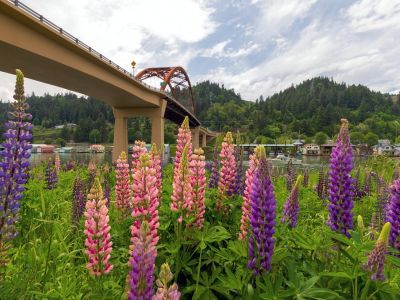About the Pacific Northwest
The Pacific Northwest encompasses a large amount of varied terrain including coastal areas, rain forests, desert climates, mountain regions, prairies and pretty much everything in between. That said, the most common perception of the Pacific Northwest includes the states of Washington, Oregon, Idaho and sometimes British Colombia. Other definitions include parts of Alaska, California, Montana, Wyoming and the Yukon Territory. That’s a lot of varied climate for one nomenclature! For the purposes of this article we are focusing on B.C., Western Washington, Oregon and Northern California.
Plants for the Pacific Northwest Gardener
Although the climate through the above region of the Pacific Northwest is notable for its mild temperatures, many gardeners find success sticking with native plants. Native plants have several benefits. They have already adapted, often over hundreds of years or longer, to their growing conditions. This means the gardener is less likely to have to make concessions in order to grow the native plant. Not only are the plants inured to their native area but they also have built up resistance to pests and diseases. This means that native plants tend to be low maintenance as well as pest and disease resistant.
Flowering Plants for the Pacific Northwest
The goal, or at least one goal, of landscaping is to make the yard look nice, and what better way than incorporating flowering plants? Native flowers run the gamut. Some are more suited to sunny exposures and others prefer part shade to shade and moist conditions. Some sun lovers include yarrow, agastache, hyssop, pearly everlasting, nodding onion, rusty pussytoes, spreading dogbane, kinnikinnick, heartleaf arnica, milkweed, balsamroot, scarlet paintbrush, fleabane, fritillaria, blanket flower, geum, lupine, bluebells, penstemon, phlox, Jacob’s ladder, Sedum stonecrop, death camas and so many more.
Native Northwest Plants for Shaded Gardens
Yarrow, red baneberry, monkshood, columbine, wild ginger, Western aster, fairy slipper, Western white clematis (as well as Columbia and blue clematis), spotted coralroot, dwarf dogwood, shooting star, prairie gentian, twinflower, bigleaf lupine, false Solomon’s seal, yellow monkey flower, self-heal and many others are suited to shade to partial shade often in moist conditions.
Deer Resistant Plants for the Pacific Northwest
Deer are fickle. A deer may turn its nose up at your neighbor’s plantings but love nibbling on yours. This means that the term deer resistant should be taken with a grain of salt. The following are plants for the Pacific Northwest gardener that are less likely to attract the deer: Bellflower, bigroot geranium, corydalis, Epimedium, foxglove, Jerusalem sage, ligularia, lupine, meadow rue, and mullein are all listed as deer resistant plantings. Shrubs that are deer resistant include barberry, blue beard, corokia silverberry, forsythia, beauty bush, magnolia, potentilla, red currant, elderberry, spirea, snowberry and lilac. Lastly, most conifers, of which there are plenty in the Pacific Northwest, are safe from deer browsing with the exception of yew and Douglas fir. Damage to trees is more likely caused by deer rubbing the velvet off their antlers, which can eventually kill a tree.
